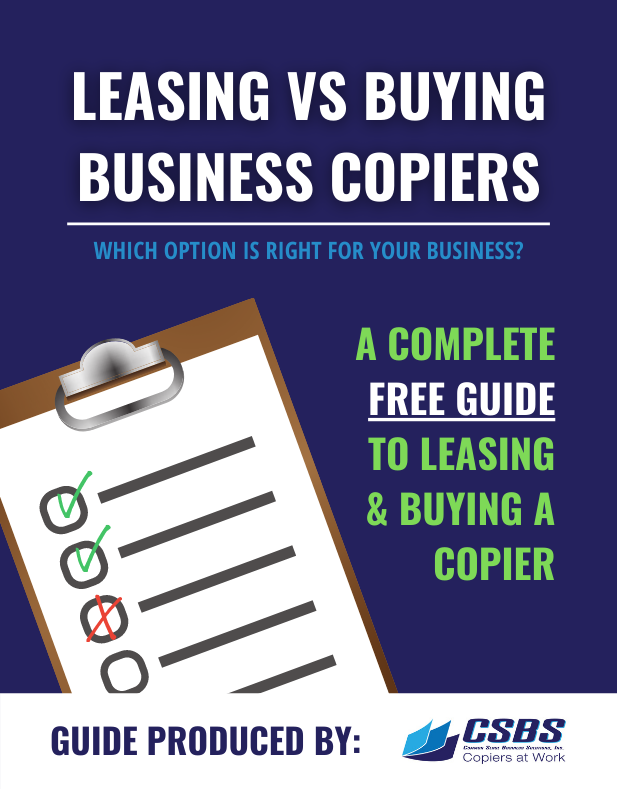The exact definition of a “small business” varies depending on which agency or organization you are talking to. The state of California, for example, typically defines “small business” as those privately owned firms with less than 50 employees. And the federal government has a number of different standards depending on the purpose and the department.
However, when it comes to copiers, the standards are fairly straightforward: a small business is somewhere less than a hundred employees. More importantly, categories of employee size correlate with average copy demand. Knowing these numbers can help in determining which machine you should buy or lease.
Thinking About Small Business Copiers
In most offices today, business copiers are required tools. This is just as true for smaller businesses that often have a need for printing photos, scanning multiple documents, or creating original publications. But unlike larger operations, massive $50,000 machines with 10,000 sheet capacity are not needed, nor feasible.
While image quality, speed, and user-friendly design and function controls are important considerations, just as important are the factors of size, versatility, and price.
The Three Benefits of Small Business Copiers
Small businesses, companies with 10 to 30 employees or those with 30 to 50, will find that copies designed with their size and needs in mind will offer the right balance of features. Three of the benefits of these small business copiers:
1. Targeted Functionality
Most small businesses and home offices benefit from the use of a multifunction machine. Instead of a separate printer, fax machine, and scanner, the cost-effective choice is a machine that does all of these tasks and more. And since a small business is unlikely to use a copy machine for hours on end, it’s far easier to balance copy jobs with other office tasks, like printing, faxing, and scanning.
2. Lower Production Volume
Unless your small business specializes in producing copies of publications or some other extreme exception, your monthly copy volume will be dictated by the number of employees and the nature of your industry or business. While it is difficult to offer an accurate estimate or benchmark, most very small businesses typically produce less than 3,000 copies each month. Slightly larger firms – those in the 30 to 50 employee range – may make as many as 10,000 copies in a month.
Knowing that number, which usually corresponds with the number of employees, can help determine which small business copier is a good fit for your company.
3. Smaller Footprint
Size matters and, in the case of copiers and small businesses, the smaller the size the better. Quality machines are designed to minimize both the physical footprint as well as maximize the user-friendliness of the commands. A key to determining the complexity of operation is review the user’s manual. The more text it has, the more difficult the machine probably is to operate.
Small Business Copiers Rule – In the Smaller Spaces
Not every office needs a $50,000 copier to print out their monthly financials. But every office needs a reliable, good quality machine no matter how much it may or may not get used. The fact is that most businesses will still benefit more by buying more machine than they think they might need.
In smaller offices that use a shared machine for their computer printer, copier, and scanner, the quality of the copier is just as critical to the strategic buying or leasing decision.

